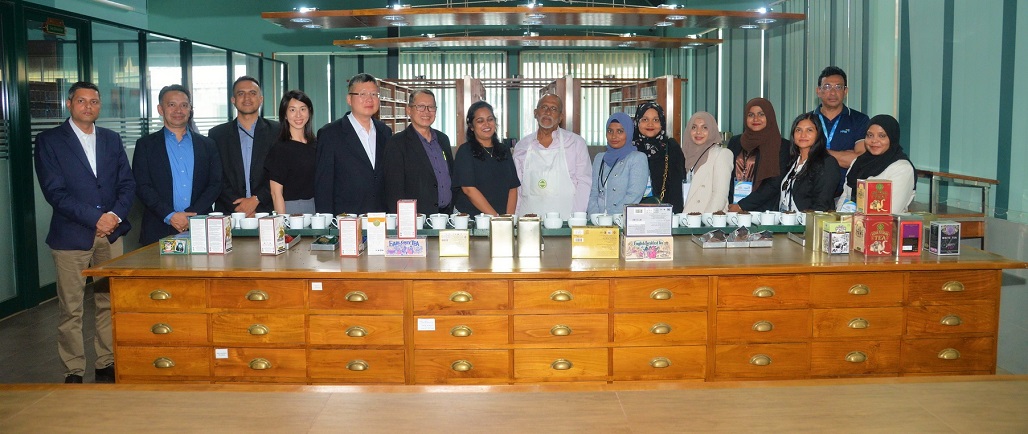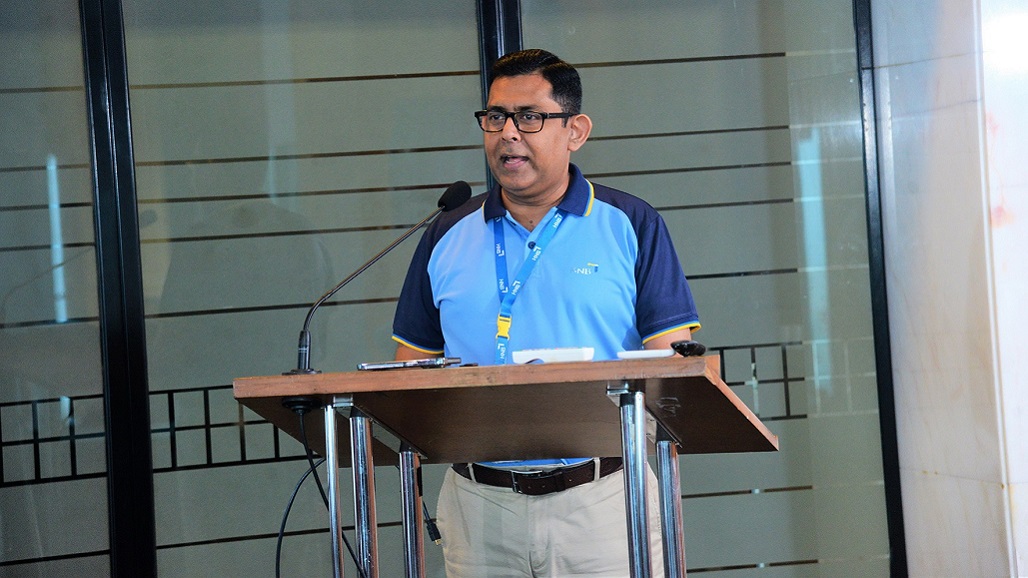The attendees included a total of 15 representatives from ABA member banks based in Iran, Maldives, Nepal, and Taiwan. Two officers from the ABA Secretariat were also in attendance.
Following is a summary of the activities during the two-day Program:
MAY 30, 2024: VISIT TO THE CENTRE OF EXCELLENCE
- Mr. Rukshan Senaratne, Chief Manager, Centralized Credit Operations
- Mr. Sothiratnam Mathanan, Chief Manager, Regional Centralized Credit Operations
- Ms. Angelina Dharmaraj, Chief Manager, Credit Administration
- Ms. Dilshani Hallock, Senior Manager, Centralized Operation
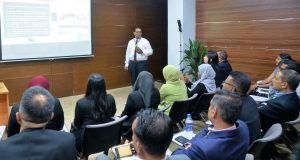
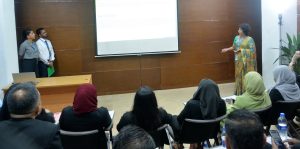
(c) The digitalization and centralization of its back-end processes is aimed at drastically streamlining HNB’s backend processes, enabling faster turnaround, improved and consistent quality in interactions with customers.

VISIT TO THE CENTRAL BANK OF SRI LANKA
Following the visit to HNB’s Centre of Excellence, the participants proceeded to the Central Bank of Sri Lanka (CBSL) , where they were received by key officers of the Bank Supervision Department led by Director Ms. Rukshana Jayatillake.
In her presentation, Ms. Jayatillake highlighted the following:
(a) The CBSL is the apex financial institution in Sri Lanka and is responsible for the administration of the monetary, financial and payment systems of Sri Lanka..
(b) The governing structure of CBSL comprises two parallel decision-making bodies; namely, the Governing Board (GB) and the Monetary Policy Board (MPB); both of which are headed by the Governor.
(b.i) GB – oversees the administration and management of the affairs of the CBSL and determines general policies of the CBSL other than the monetary policy.
(b.ii) MPB – formulates monetary policy of the CBSL and implements a flexible exchange rate regime in line with the flexible inflation targeting framework in order to maintain domestic price stability.
(c) In addition to its primary objective of maintaining domestic price stability, the CBSL seeks to achieve and maintain a healthy and stable economic and financial system while maximizing resource utilization.
(d) CBSL is responsible for conducting monetary policy in Sri Lanka, which mainly involves setting the policy interest rates and managing the liquidity in the economy. The monetary operations of the Central Bank influence interest rates in the economy, affecting the behavior of borrowers and lenders, economic activity and ultimately the rate of inflation. Therefore, the Central Bank uses monetary policy to control inflation and keep it within a desired path.
PRESENTATIONS AT THE HNB HEADQUARTERS
Welcome Remarks

Presentation on Digital Transformation
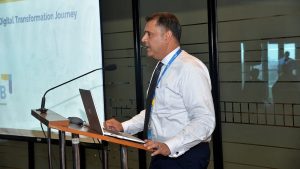
(a) Centralization of critical banking operation such as Centralized Credit Operation which is involved in evaluation of Retails Credit (Housing Loan, Personal Loan, Education Loan, Leasing & Credit Cards); Credit Administration Department which is involved in preparation of security documents and disbursement of Credit facilities; Centralized Operations Department which is involved in all back office functions related to branch operations such as account opening, inward and outward cheque clearing, credit & debit card issuance, processing of e-banking applications, etc.; Regional Centralized Credit Operations, which is involved in TOD management; Center of Aspiration which is involved in obtaining insights of the consumer collections of HNB via its call center arrangement; and “HNB Connect” which has been established to discontinue the outsourced contact centre. These all resulted in quality credit, improved compliance, and focused sales staff.
(b) Digitalization and paperless system, which comprised of setting in place cash deposit machines, recyclers, and cheque deposit machines, thereby reducing counter traffic; digital banking payment applications and digital wallets as omnichannel; and introduction of a dynamic approval workflow for digital approvals. These all led to seamless cash operations, enhanced CX, and faster TAT.
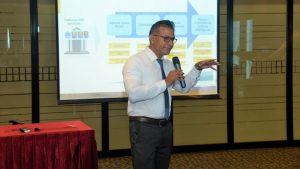
(c) Process automation, which involved robotic process automation to automate insurance renewal, easy payment plans, alert registrations and custodian banking operations; use of Machine learning to build insights and trends; and trade workflow for seamless trade operations. These all resulted in improved productivity, increased staff bandwidths, and increased controls.
Presentation on Transaction Banking
- Launching of payments and cash management business (2016);
- Aggressive business development by leveraging on corporate banking business (2017-2018);
- Problem identification following competition landscape chambers (2018-2019);
- Revamping PCM into WBG Transaction Business to achieve WBG transformation (2020-2022); and
- Achieving market leadership and collaboration (2023-2024).
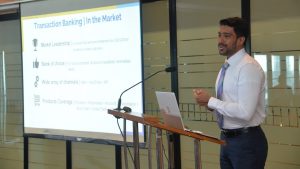
Mr. Dharmasiri also identified the Bank’s focus areas, namely: transaction banking value proposition; round-the-clock operating accounts; portfolio deepening; digital channels spread, drive value chain, and drive digital (manual to auto).
He also outlined the key features of the Bank’s transaction banking which he noted tobe tailormade for business banking. These key features include:
He also outlined the key features of the Bank’s transaction banking which he noted tobe tailormade for business banking. These key features include:
- Multiple account visibility;
- Real-time cheque deposit information;
- Cross-border advance payments;
- All LKR payments;
- Government payments;
- Payroll; and
- Accounts reconciliation reports.
Presentation on Cyber Risk
- It’s easy for board members to take their eyes off cybersecurity when current events take precedence and raise new concerns. However, the modern landscape is constantly introducing new complexities and cybercriminals are not standing still. Hence, other priorities should not overshadow cybersecurity, especially in the deeply interconnected world where systemic risks is a growing problem.

- The greatest concerns of the Board when it comes to technology risk, based on a survey conducted in 2023, are disruptions to operations, internal data becoming public, and reputational damage.
- While the Board has the power to set priorities that can put the organization on sound security footing, just under 2 percent of board members on average have any relevant, recent experience in cybersecurity, and many board members do not fee confident about IT and security oversights, or they have ambivalent views on the board’s role regarding security.
- Those involved in cybersecurity n the organization (e.g., the Chief Information Security Officer, or CISO) should speak like a Board member by talking business not technology; acting as an impartial guide and facilitator; centering on ROI, especially in terms of strategic relevance; focusing of opportunities, not cost; and quantifying the technology risks. They should demystify trade offs for board members andguide them through decisions rather than prescribing solutions as an authority; use examples and illustrations appropriate for interested business experts, not technical experts; always show how your security initiatives align with business needs and long-term priorities; and talk in numbers, not qualitative attributes (e.g., high, medium, low)
Fellowship Night
Following the presentations by the HNB officers, the participants gathered together with their colleagues from HNB for a Fellowship Night. The event provided them the opportunity to get to know each other better in an atmosphere of camaraderie and friendship.
The event was graced by the presence of current and former key officers of HNB such as Outgoing CEO Mr. Jonathan Alles and Former Chief Operating Officer Mr. Dilshan Rodrigo who have remained active in the ABA.
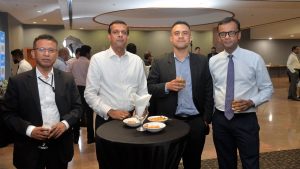
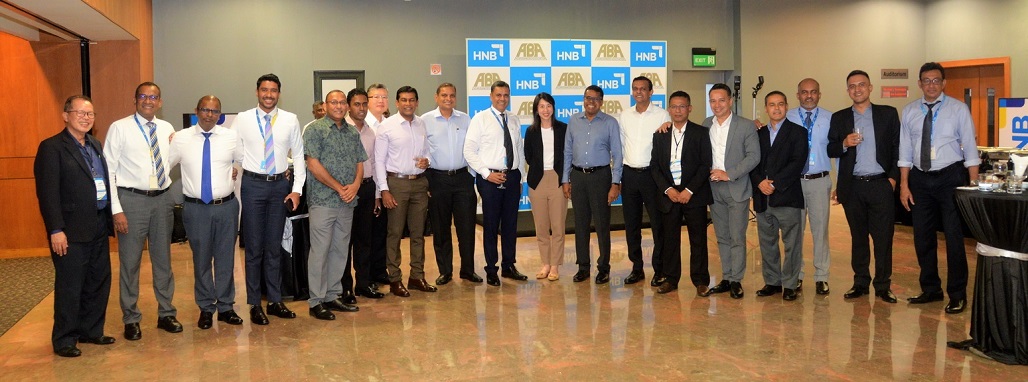
MAY 31, 2024: VISIT TO THE CREDIT INFORMATION BUREAU OF SRI LANKA
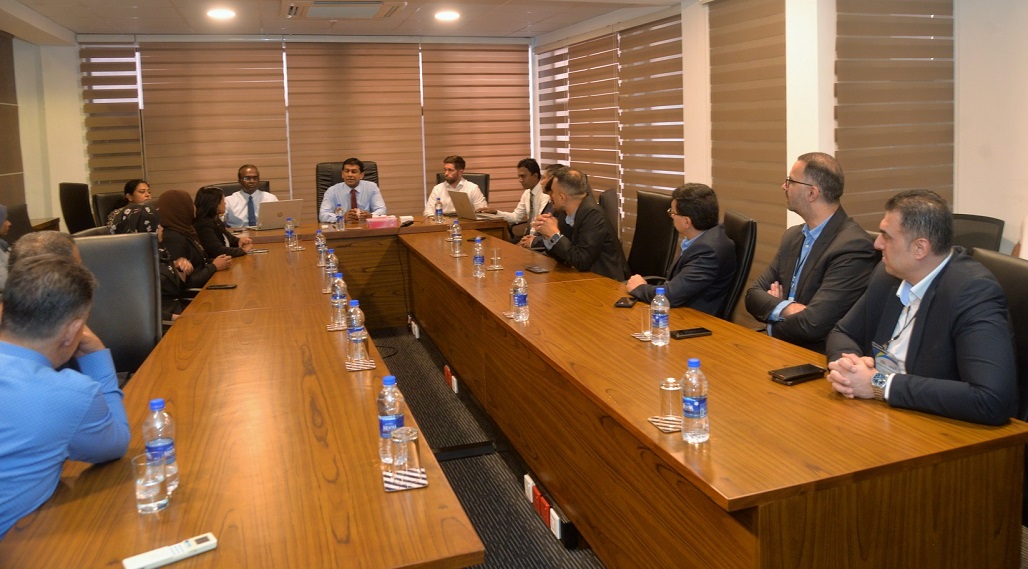
The Program participants were welcomed by the officers of the Credit Information Bureau of Sri Lanka (CRIB) led by Mr. Pushpike Jayasundera, Director and General Manager.
From the presentations made by the receiving CRIB officers, the participants learned the following:
(a) Established in 1990 as the first Credit Bureau in the South Asian region, CRIB is an independent statutory body and a public – private partnership with the Monetary Board of the Central Bank of Sri Lanka holding the majority of equity. The rest of the shares are divested among other shareholder members of the bureau.
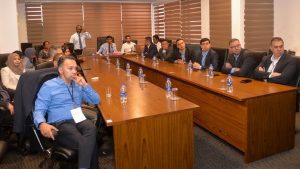
PRESENTATION BY LANKA CLEAR
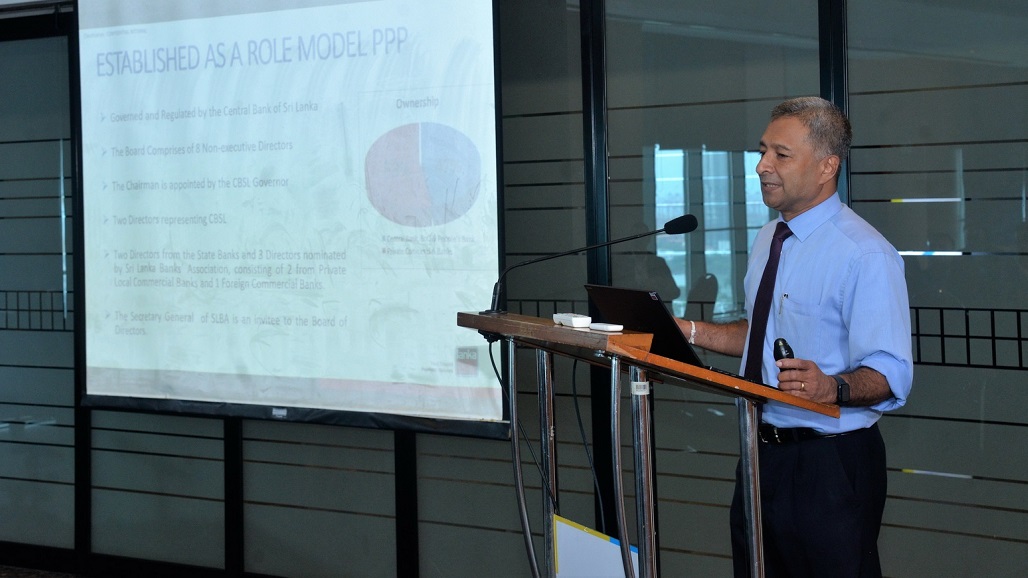
Established in February 2002 as the National Cheque Clearing House, Lanka Clear is owned by the Central Bank of Sri Lanka (CBSL) and all CBSL-licensed commercial banks in the country. Lanka Clear is the operator of LankaPay, the country’s largest interbank payment network.
Its facilities include the following:
- The Sri Lanka Interbank Payment System (SLIPS) is the largest account-to-account fund transfer network in Sri Lanka. Created by Lanka Clear, it enables member banks to carry out same-day transfers of up to Rupees 5 million, in a secure paperless process.
- Launched under the brand name LankaPay in July 2013, the Common Card and Payment Switch (CCAPS) is the first phase of creating a more robust, efficient, and secure payment infrastructure for Sri Lanka.
- The Common ATM Switch (CAS) is an interbank ATM network that allows participating banks to use each other’s ATMs for free or at a minimal charge. The system was launched in July 2013.
- The Common Electronic Fund Transfer Switch (CEFTS) for short is a fully automated paperless fund transfer system which allows instantaneous fund transfers between member banks.
VISIT TO THE CENTRE OF ASPIRATION AND THE CONTACT CENTRE
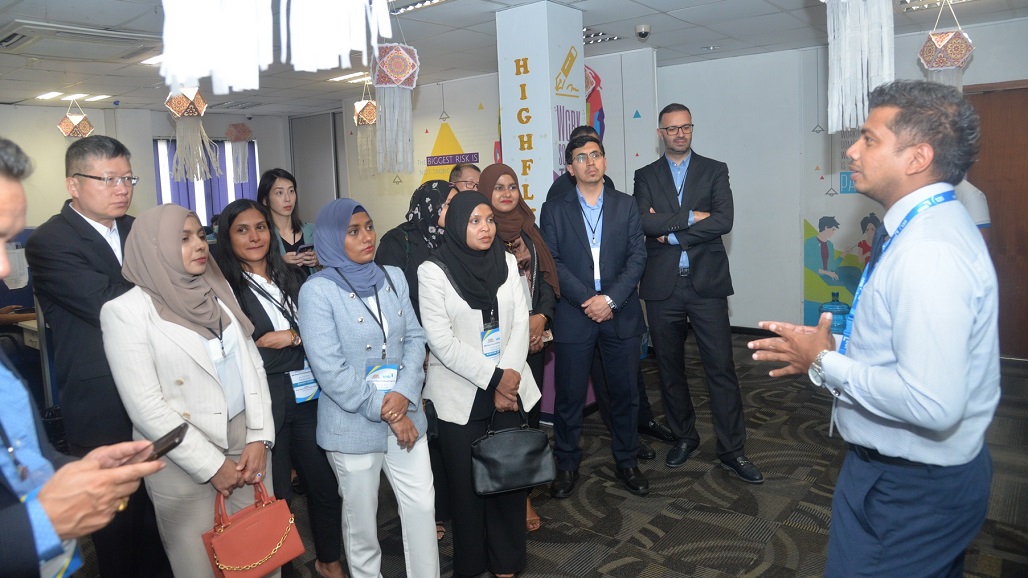
CLOSING REMARKS AND PRESENTATION OF CERTIFICATES OF ATTENDANCE
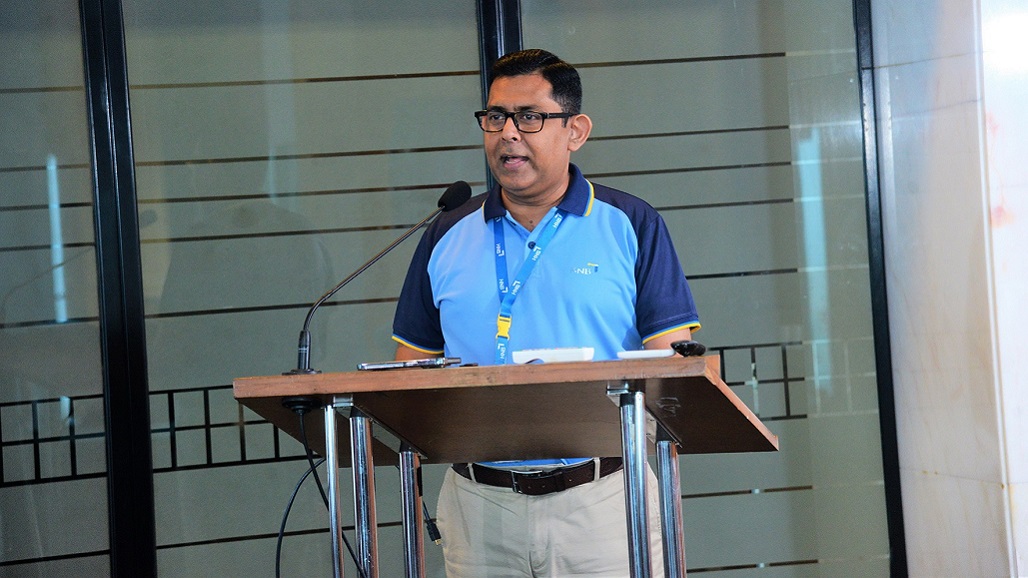
At the end of the second day, the Program participants received Certificates of Attendance and some souvenirs from Mr Damith Palllewatte, Acting Chief Executive Officer of HNB.
Before the presentation of the Certificates, Mr. Pallewatte thanked the Program attendees for visiting Sri Lanka and for their active participation in the discussions. He gave a summary overview of what HNB is doing in the area of Digital Transformation, Digital Channels and Cyber Risk. He also cited the important role played by the Center of Excellence and the Center of Aspiration in the Bank’s efforts provide convenient and efficient banking services and experience to its customer base.
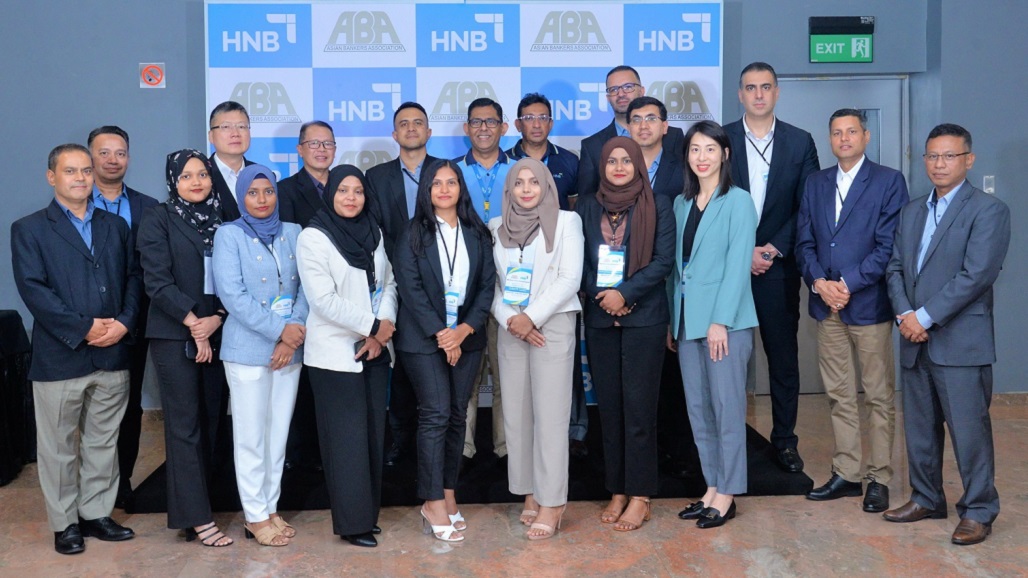
He said that maintaining strong relationship with other Asian banks is important to HNB, thus the Bank values its ties with the ABA. He stated that the 2024 short-term visiting program, the third one organized by HNB since joining the ABA, would not only enable the participants to gain expertise and skills from the experience and best practices of HNB but also allow them to expand their networks with the Bank and the other participants.
He expressed the Bank’s continued commitment to and support of the objectives of the ABA, and that he looks forward to more collaboration of activities with the ABA for the mutual benefit of both organizations and the community they serve.
SIDE ACTIVITIES: Visit to Mlesna Tea Company
